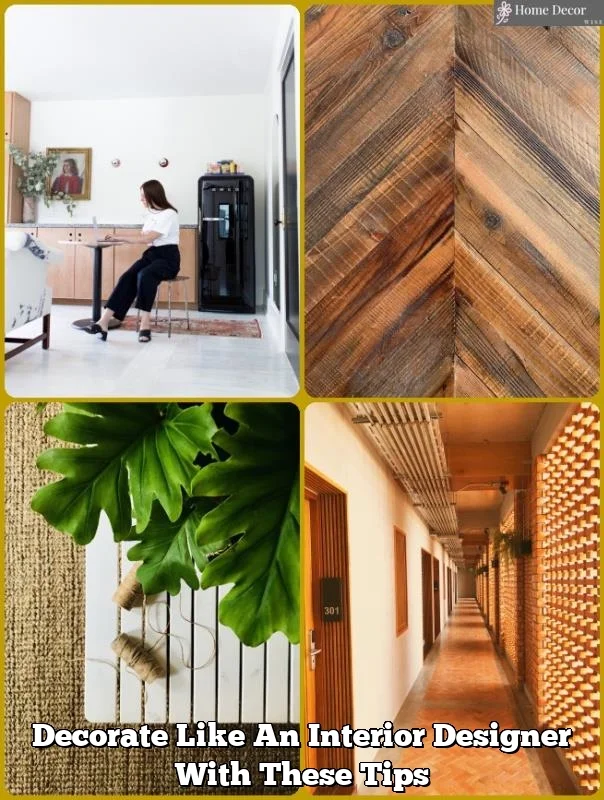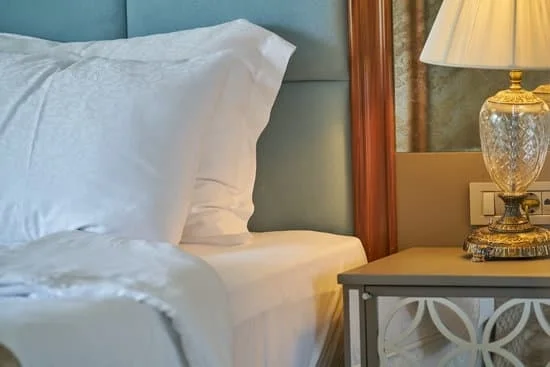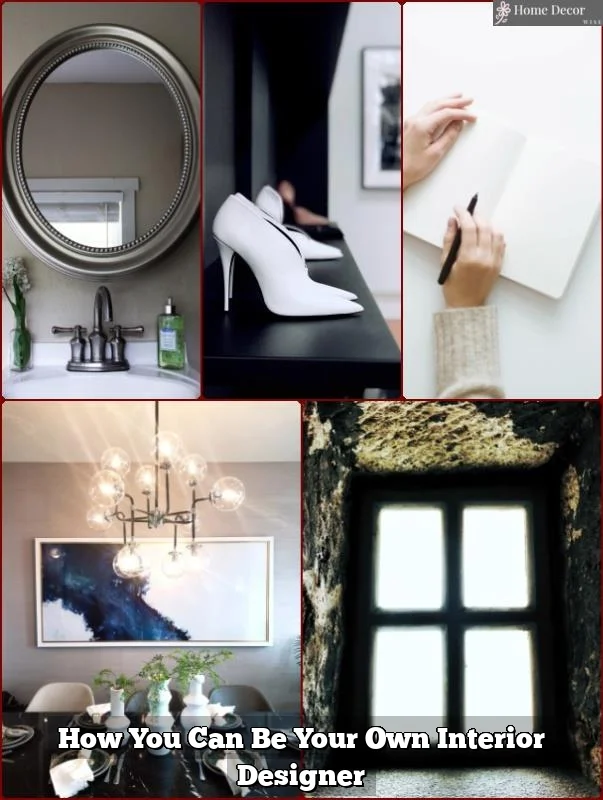Are you ready to give your home a designer makeover? In this article, we will explore the world of interior design and provide you with all the tips and tricks you need to decorate your home like a professional. From understanding the basics of interior design to finding inspiration and incorporating personal touches, we will guide you through every step of the process.
When it comes to decorating your home, it’s not just about making it look good – it’s about creating a space that reflects your personality and enhances your lifestyle. With the right guidance, anyone can achieve a designer look in their own home. Whether you’re looking to completely revamp your space or simply update a few key elements, our comprehensive guide will help you transform your living space into a stylish and inviting oasis.
Throughout this article, we will delve into the key elements and principles that designers use to create beautiful spaces, offer tips for choosing the right color scheme, provide advice on furniture arrangement and selection, and discuss how to add texture, layers, and lighting to achieve a balanced and visually appealing design. So get ready to unleash your inner designer and bring your dream home to life.
Understanding the Basics of Interior Design
Interior design is the art of enhancing the interior of a space to achieve a more aesthetically pleasing and functional environment. It involves understanding how people interact with their surroundings and creating spaces that are not only visually appealing but also conducive to the activities that will take place within them.
Key Elements of Interior Design
The key elements of interior design include line, form, color, texture, pattern, and light. Lines can be used to create symmetry or to lead the eye to a focal point in a room, while form refers to the shape and structure of objects within a space. Color, texture, and pattern are used to add visual interest and create a specific mood or atmosphere. Light is also an essential element as it can greatly impact how a space looks and feels.
Principles of Interior Design
In addition to the key elements, there are also principles that guide interior designers in creating beautiful spaces. These principles include balance, harmony, emphasis, scale, and proportion. Balance ensures that elements within a space are evenly distributed so that no one part overpowers another.
Harmony creates unity or agreement among all the components of a design. Emphasis highlights important features or focal points within a room, while scale and proportion ensure that objects within the space relate well to each other in terms of size.
Understanding these key elements and principles is essential for anyone looking to decorate their home like a designer.
Creating Beautiful Spaces
By mastering these fundamental aspects of interior design, individuals can learn how to use them effectively in their own homes. Once these principles are understood and applied correctly, they can help individuals infuse elegance into their living spaces while improving functionality at the same time. Whether it’s by implementing symmetrical designs for formal areas or ignoring strict rules for casual rooms where spontaneity is encouraged-keeping these factors in mind will bring any room together cohesively.
Overall, understanding these basic foundations will empower individuals to decorate their homes with confidence while achieving professional-looking results that reflect their personal style preferences.
Finding Inspiration
When it comes to decorating your home like a designer, finding inspiration is key. One of the best places to look for ideas is in interior design magazines and websites. These resources often showcase the latest trends, innovative design concepts, and stunning spaces created by professional designers. Browsing through these publications can help you identify styles, colors, and dcor that resonate with you.
Another great way to find inspiration is by visiting furniture showrooms, model homes, and open houses. Seeing how professionals have styled various rooms can give you a better understanding of how certain pieces work together and how different design elements can be combined to create a cohesive look.
Additionally, social media platforms such as Pinterest, Instagram, and Houzz are treasure troves of inspiration for home dcor. On these platforms, you can explore countless images of beautifully designed interiors from around the world. By creating mood boards or saving images that catch your eye, you can start to curate a collection of ideas that will guide you in decorating your own home.
In order to translate these inspirations into your own space, it’s important to understand the key elements of the designs that appeal to you. Pay attention to color schemes, furniture arrangements, and decorative details within the spaces that inspire you. This will help you identify common themes and styles that you can incorporate into your own home while still reflecting your personal taste.
| Source | Description |
|---|---|
| Interior Design Magazines/Websites | Showcases latest trends and professional designs |
| Furniture showrooms/Model homes/Open houses | Provides real-life examples of professionally styled spaces |
| Social Media Platforms (Pinterest/Instagram/Houzz) | Showcases diverse range of beautifully designed interiors worldwide |
Choosing the Right Color Scheme
When it comes to decorating your home like a designer, choosing the right color scheme is essential. The colors you choose will set the tone for your entire space and can greatly impact the overall look and feel of a room. By following some simple tips for selecting a color palette, you can create a beautifully cohesive design that reflects your personal style while still achieving a designer look.
Understanding Color Theory
Before selecting a color scheme for your home, it’s important to have a basic understanding of color theory. This includes knowing the fundamentals of primary, secondary, and tertiary colors, as well as how different colors can create various moods and atmospheres. Understanding concepts such as complementary, analogous, and monochromatic color schemes can also help you make informed decisions when choosing colors for your space.
Considering the Mood
Each color has its own psychological impact on our emotions and mood. When selecting a color scheme for a particular room, consider the mood you want to create.
For example, cool tones such as blues and greens are known for their calming effect, making them ideal choices for bedrooms or relaxation areas. On the other hand, warm tones like reds and yellows can evoke energy and excitement, making them suitable for spaces where you want to promote activity and social interaction.
Creating Balance
While it’s important to choose colors that reflect the desired mood of each room, creating balance within your color scheme is crucial. This includes considering aspects such as contrast, saturation levels, and the use of neutrals to prevent overwhelming or unbalanced designs. By carefully balancing bold or vibrant colors with more subdued tones and neutrals, you can achieve harmony in your interior design while still incorporating pops of personality.
Furniture and Layout
When it comes to interior design, the arrangement and selection of furniture play a crucial role in creating a balanced and visually appealing space. Designers use various techniques to achieve this, and by understanding some key principles, you can decorate your home like a pro. Here are some tips for arranging and selecting furniture to achieve a designer look:
- Functionality: Consider the function of each space before selecting and arranging furniture. The layout should allow for easy movement and provide comfortable seating and functionality.
- Balance: Achieving visual balance is important in interior design. This can be achieved by distributing the visual weight of furniture evenly throughout the space. For example, if you have a large sofa on one side of the room, balance it out with a couple of armchairs or a coffee table on the other side.
- Scale and Proportion: The size of your furniture should be proportionate to the size of the room. Oversized furniture in a small room can make it feel cramped, while tiny furniture in a large room can feel lost. Pay attention to scale and proportion when selecting pieces for your space.
In addition to these principles, consider the layout of your furniture to create flow and function within each room. Think about how you move through the space and arrange your furniture accordingly.
Arranging Tips
- Create conversation areas by grouping seating arrangements together.
- Avoid pushing all furniture against the walls – pull them away from walls where possible to create more intimate spaces.
- Consider traffic flow when arranging furniture – aim for clear pathways between pieces.
By applying these tips and principles, you can arrange and select furniture in a way that achieves a balanced and visually appealing design in your home, just like a professional interior designer would.
Adding Texture and Layers
One of the key elements in interior design is the use of textiles, accessories, and dcor to create depth and interest in your home. By incorporating different textures and layers, you can transform a plain space into one that is visually appealing and inviting. Textures can be introduced through various materials such as fabrics, wood, metal, glass, and more. These elements add dimension to a room and create a more dynamic environment.
When it comes to textiles, consider using a mix of materials like cotton, silk, wool, and leather to add diversity to your space. The addition of throw pillows, rugs, curtains, and blankets can also contribute to the overall ambiance of the room. Furthermore, accessories such as artwork, vases, sculptures, and decorative items can be strategically placed to enhance the visual interest within a room.
In addition to textiles and accessories, dcor plays a crucial role in adding texture and layers. The use of wall treatments such as wallpaper or textured paint can help create focal points within a space.
Furthermore, layering different types of dcor items such as mirrors or artwork on walls can add dimension while creating a captivating visual impact for guests. By exploring these design elements further – from textiles to accessories to dcor – you can infuse creativity into your home while achieving the depth and interest characteristic of professionally designed spaces.
| Key Elements | Interior Design Tips |
|---|---|
| Textiles | Use diverse materials like cotton, silk, wool |
| Accessories | Incorporate artwork,vases,sculptures for visual appeal |
| Dcor | Add focal points with wallpaper or textured paint |
Lighting and Ambiance
Lighting is a crucial element in interior design as it can greatly impact the ambiance and overall feel of a space. Whether you’re aiming for a cozy, intimate atmosphere or a bright, energizing environment, the right lighting can make all the difference. Here are some key considerations for incorporating lighting into your home design:
- Types of lighting: There are three main types of lighting – ambient, task, and accent. Ambient lighting provides overall illumination for a room, while task lighting is focused on specific areas for activities such as reading or cooking. Accent lighting highlights certain features or creates visual interest.
- Layered lighting: Designers often use a combination of these three types of lighting to create depth and variation in a room. By layering different sources of light, you can achieve both functionality and aesthetic appeal.
- Natural light: Maximizing natural light is also essential in design. Large windows, skylights, and strategically placed mirrors can help to bring in more natural light and make a space feel brighter and more open.
In addition to the type and placement of lighting, the color temperature of bulbs can also impact the mood of a room. Warm-toned bulbs provide a cozy and inviting atmosphere, while cool-toned bulbs offer a more modern and refreshing ambiance.
Properly integrating lighting into your home design plan can elevate the look and feel of each room. From casting warm tones during intimate gatherings to brightening up workspaces with task lights, thoughtfully planned out illumination contributes to an overall well-designed home interior.
Incorporating Personal Touches
One way to incorporate personal touches is by displaying meaningful items such as family heirlooms, travel souvenirs, or handmade crafts. These items tell a story and add character to your home while reflecting your personal experiences and interests. Additionally, incorporating artwork that resonates with you can bring life and vibrancy to your space.
Another way to infuse your personality into your home is through customization. Whether it’s customizing furniture pieces or incorporating DIY projects, adding unique elements that are tailored to your preferences can create a one-of-a-kind look. It could be as simple as reupholstering a chair in a fabric that speaks to you or creating a gallery wall with photos and artwork that hold sentimental value.
Ultimately, the goal is to create a home that feels like an authentic representation of who you are while still achieving a designer look. By incorporating personal touches in thoughtful ways throughout your space, you can create a home that is not only aesthetically pleasing but also deeply meaningful to you.
Frequently Asked Questions
How Do I Get a Designer Look in My House?
To get a designer look in your house, start by choosing a cohesive color palette and investing in quality furniture pieces. Add layers of texture through rugs, curtains, and throw pillows to create visual interest.
Incorporate statement pieces and unique decor items to give your space a personalized touch. Finally, pay attention to lighting and consider adding artwork or wall treatments to elevate the overall design.
How to Decorate Your Home Like an Interior Designer?
Decorating your home like an interior designer involves paying attention to details such as proportion, scale, and balance. Start by decluttering and organizing your space, then focus on creating functional yet stylish room layouts.
Consider mixing different textures and patterns while also incorporating elements of contrast to add visual appeal. Don’t forget the power of accessories – they can truly make a room feel complete.
How Can I Make My House Look Fancy?
Making your house look fancy can be achieved through small but impactful changes such as adding crown molding, upgrading light fixtures, and investing in luxurious fabrics for curtains or upholstery. Enhance your entrance with a stylish doormat and potted plants, and consider adding an accent wall with wallpaper or a bold paint color.
Additionally, keep things tidy and well-maintained – an organized, clean space always feels more upscale.

I’m thrilled to be your companion on this exciting journey through the world of home decor and design. With a passion for turning houses into homes and a keen eye for the finer details, I’m here to help you transform your living spaces into beautiful, functional, and meaningful havens.





